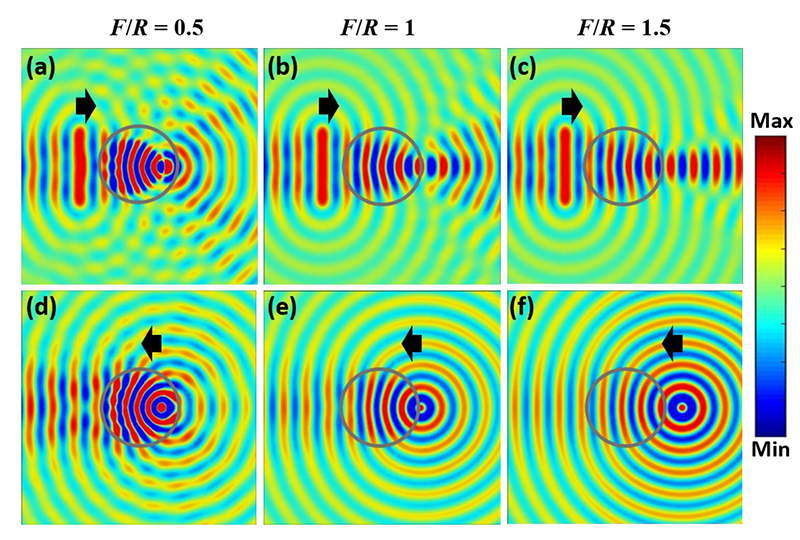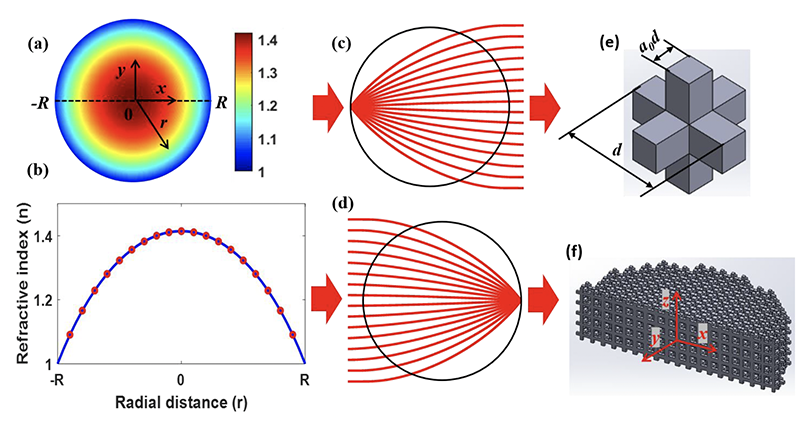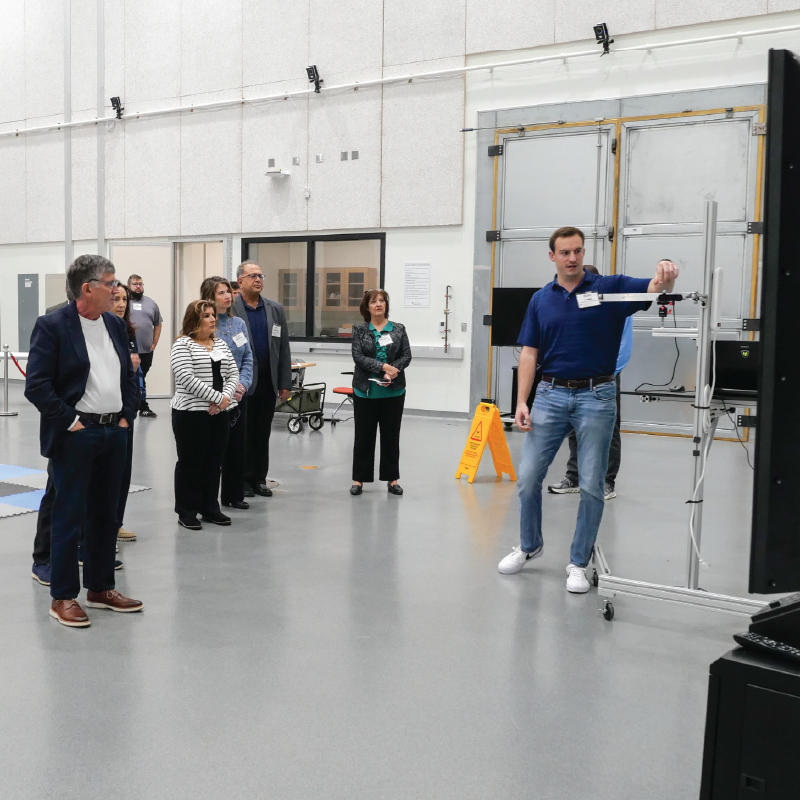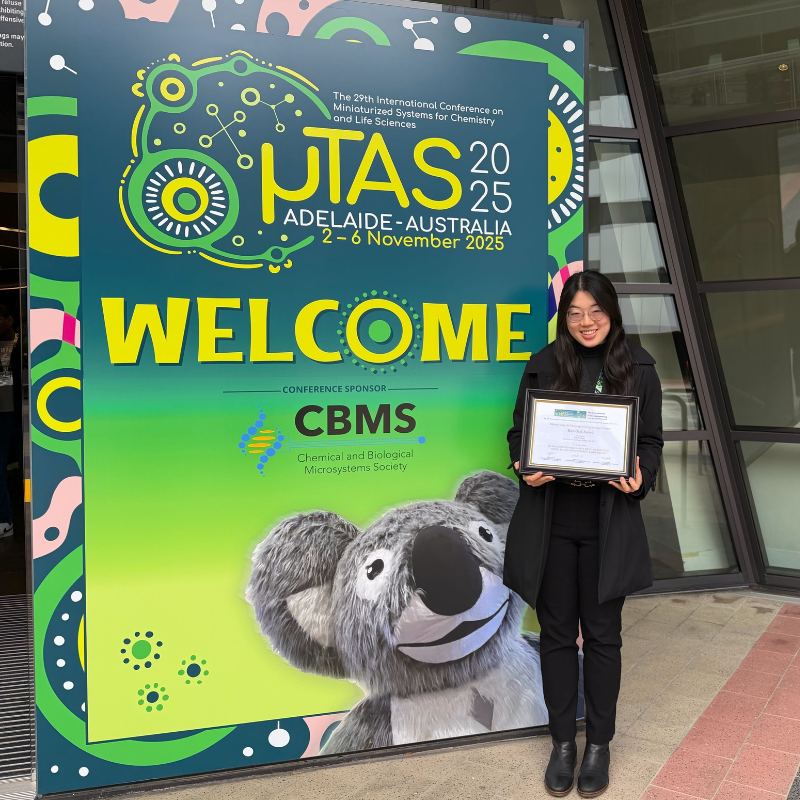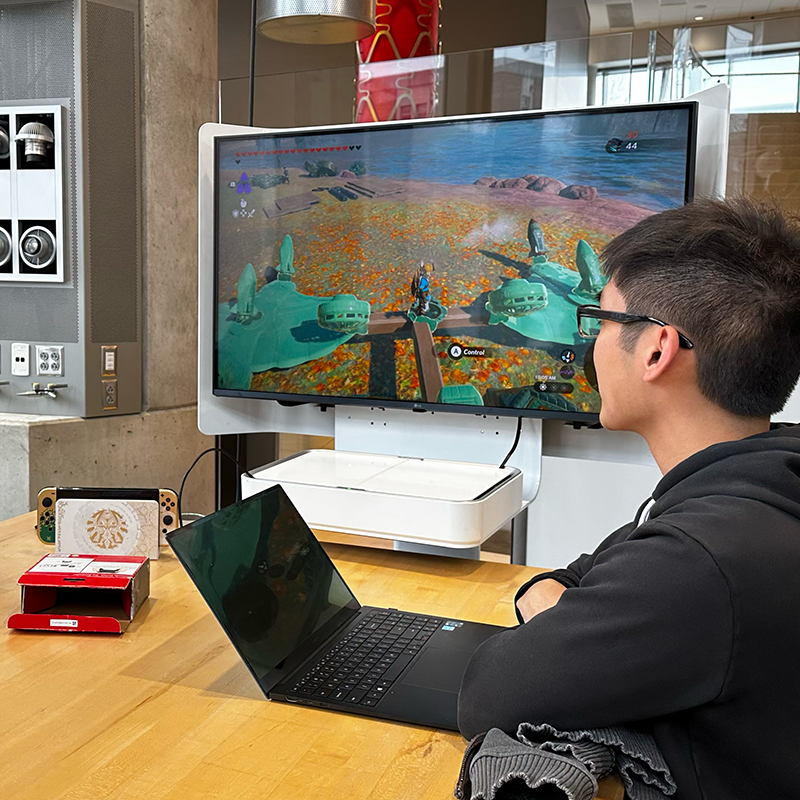News Story
Two papers by Yu and colleagues advance development of lenses and waveguides

Fig. 1 from the “structural lens” paper shows a schematic of the lens performing (a) triple focusing and (b) three-beam splitting.
Two new papers written by Professor Miao Yu (ME/ISR) and her colleagues Liuxian Zhao and Chuan-Xing Bi offer advances in the ability to control and manipulate elastic waves, important in structural health monitoring, telecommunication, signal processing, energy harvesting and vibration control, among other uses. The work continues the recent innovations Yu has made to this field.
Zhao is Yu’s former ISR postdoctoral researcher, who is now at the Institute of Sound and Vibration Research (ISVR), Hefei University of Technology (HUT) in Hefei, China. Chuan-Xing Bi is the managing director of ISVR at HUT.
The first paper
Being able to control and manipulate elastic waves is important in many fields, including structural health monitoring, telecommunication, signal processing, wave cloaking and vibration isolation. The paper, Designing flexural wave gradient index lens based on the Rays Inserting Method was published in the Elsevier journal, Results in Physics, with early access online available in August 2022. This work is the first attempt to use the Rays Inserting Method (also known as RIM) to design structural components like lenses and waveguides for manipulating flexural wave propagation along desired paths in a thin plate.
RIM was originally proposed to design dielectric optical devices. It is a simple process that allows engineers to design thickness variations in a thin plate with a desirable refractive index distribution for an intended wave path. The RIM process starts by introducing desired wave path trajectories, from which the refractive index distribution of a structural element can be calculated. The refractive index distribution, in turn, can be realized by using a variable thickness structure whose thickness profile can be obtained through Snell’s law, a formula used to describe the relationship between the angles of incidence and refraction, when referring to light or other waves passing through a boundary between two different media, such as water, glass, or air. By combining several variable thickness structure elements, complex wave trajectories for cloaking, isolation, and obstacle avoidance can be created.
Using RIM, the authors successfully designed and studied a focusing/collimating lens and a waveguide that rotates the wavefront by 45 degrees. Their results demonstrated RIM’s viability and effectiveness for designing variable thickness structures for manipulating flexural wave propagation.
The second paper
In recent years, composite structures and metamaterials have received attention for their unique acoustic wave control and manipulation properties, which can enhance performance for damage detection, beam steering, beam multiplexing, multi-beam structural health monitoring, ultrasonic medical imaging, energy harvesting, signal processing, vibration control, and underwater detection applications.
The group’s paper, Structural lens for broadband triple focusing and three-beam splitting of flexural waves, was published in the Elsevier journal, International Journal of Mechanical Sciences, early access online available in November 2022. It describes Luneburg gradient-index (GRIN) lens designs based on a concentric circular variable thickness structure, with the continuous changing of thickness defined in a thin plate structure. These lenses can be used to manipulate optical and acoustic waves. They can focus a plane wave into three spots (triple focusing) and split elastic waves emanating from a point source into three collimated beams of different directions (three- beam splitting) with broadband property.
The locations of the lenses’ focal points and directions of collimated beams can be engineered by changing thickness profiles according to governing equations. Because these lenses do not rely on photonic lattices made of discrete unit cells, they offer broadband performance advantages.
This is a small and simple lens that can overcome the limitations of previous triple focusing and beam splitters. It holds great promise for energy harvesting, structural health monitoring, medical imaging, and other applications.
Published December 31, 2022
